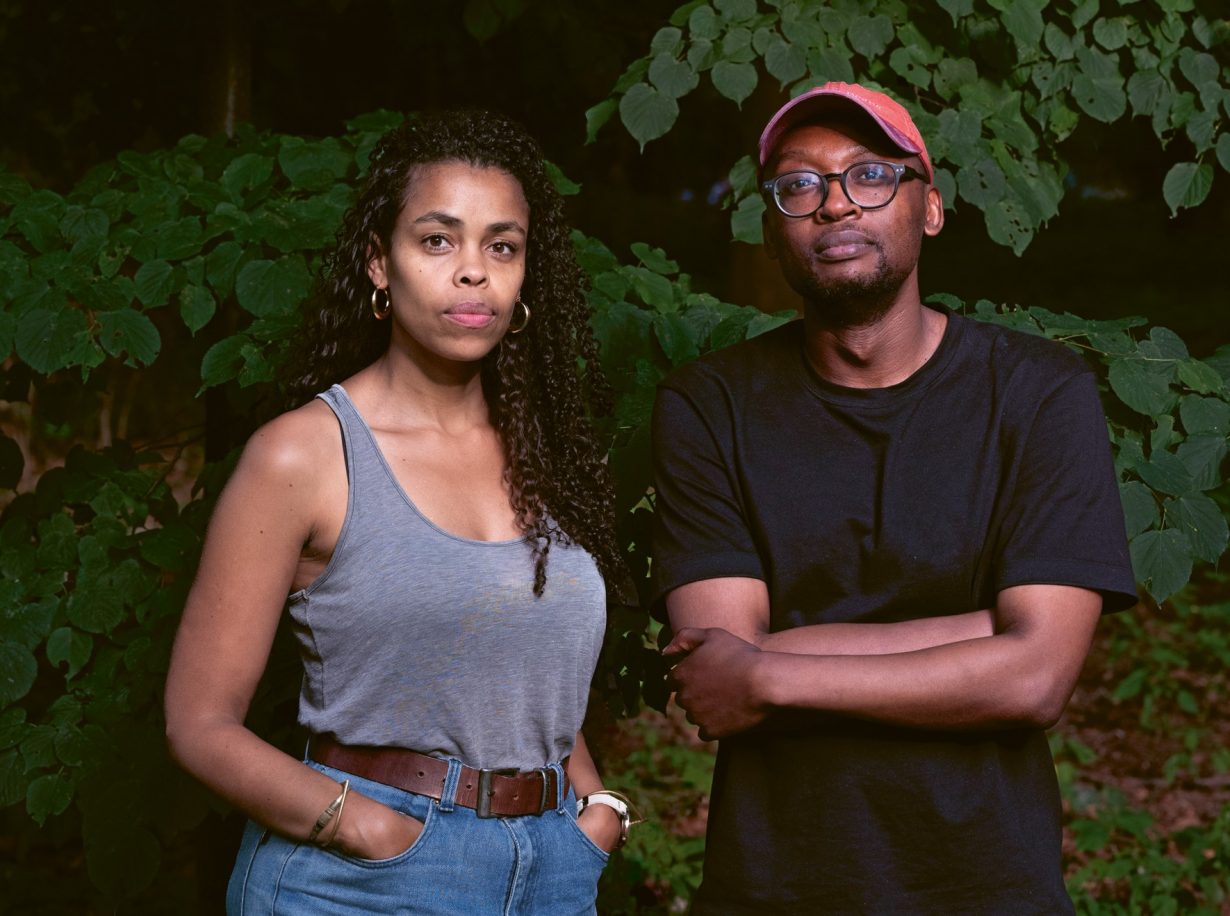ArtReview sent a questionnaire to artists and curators exhibiting in and curating the various national pavilions of the 2024 Venice Biennale, the responses to which will be published daily in the leadup to and during the Venice Biennale, which runs from 20 April – 24 November.
MADEYOULOOK (Molemo Moiloa and Nare Mokgotho) is representing South Africa; the pavilion is in the Sale d’Armi, Arsenale.

ArtReview What do you think of when you think of Venice?
MADEYOULOOK The rising waters…
AR What can you tell us about your exhibition plans for Venice?
M We are working on an entirely new commission, based on seven years of research on land, infrastructures of repair and oral histories. The work is informed by two historical sites in South Africa that offer imaginaries of repair that we feel have global resonance for our contemporary moment. The work is primarily a sound installation and an opportunity for pause and immersion.
AR Why is the Venice Biennale still important, if at all? And what is the importance of showing there? Is it about visibility, inclusion, acknowledgement?
M This is a question we are currently grappling with. We understand Venice to be an incredible opportunity to connect with broader publics. At the same time, the nature of our work over the past 15 years has generally been relational, time based and intimate in scale, and we are contending with how to bring this to the fast paced, exhibition-centred and grand dimensions of what Venice is.
AR When you make artworks do you have a specific audience in mind?
M We generally understand our work to operate at various levels at which we seek to connect with different audiences. We are intentional about communicating with anyone interested in our work, at a broader level. And see our work as being more deeply accessible at varying other levels, based on one’s knowledge and familiarity with (or willingness to learn more about) the subject matter. Because of this, our work is most deeply readable to a specific South African audience, but we think it resonates with more global questions and urgencies that others can certainly connect to.
AR Do you think there is such a thing as national art? Or is all art universal? Is there something that defines your nation’s artistic traditions? And what is misunderstood or forgotten about your nation’s art history?
M Our work is deeply informed by South African histories of art practices, as well as politics and traditional practices etc. We work from the South African archive and influences of artists and thinkers before us. But at the same time, our practice is in constant engagement with artists and thinkers around the world, and particularly in the majority world, with whom we regularly collaborate and whose ideas sharpen our own.
AR If someone were to visit your nation, what three things would you recommend they see or read in order to understand it better?
M See: The Johannesburg Art Gallery. Read: Rediscovery of the Ordinary [1991] by Njabulo Ndebele. Listen: The Brother Moves On’s a new myth [2013].
AR Which other artists have influenced or inspired you?
M Santu Mofokeng.
Zina Saro-Wiwa, Zanele Muholi, Zakiya McKenzie, Yazan Khalili, Todd Matshikiza, Tizintizwa, Thulile Gamedze, Thembinkosi Goniwe, Temporary Services, Sipho ‘Smokey’, the Sangwoodgoon collective, Rirkrit Tiravanija, Paulo Tavares, Paul Beaty, Pandeani Liphosa, Pamella Dlungwana, Octavia Butler, Nontobeko Ntombela, Nolan Dennis, Njabulo Ndebele, Mvuselelo Ngcoya, Medu Art Ensemble, Mbuso Nkosi, Marwa Arsanios, Lara Khaldi, Keleketla!, José Esteban Muñoz, John Akomfrah, João Orrechia, IkkibawiKrrr, George Tebogo Mahashe, Fred Moten and Stefano Harney, Emeka Ogboh, Dineo Skosana, Danai Mupotsa, Cráter Invertido, Buyani Duma, Black Studio, Barry Jenkins, Audre Lorde, Ashraf Jamal, Arianna Lissoni, Ama Josephine B. Johnstone, Ala Plastica, AbdouMaliq Simone, and many more…
AR What, other than your own work, are you looking forward to seeing while you are in Venice?
M Friends.
The 60th Venice Biennale, 20 April – 24 November